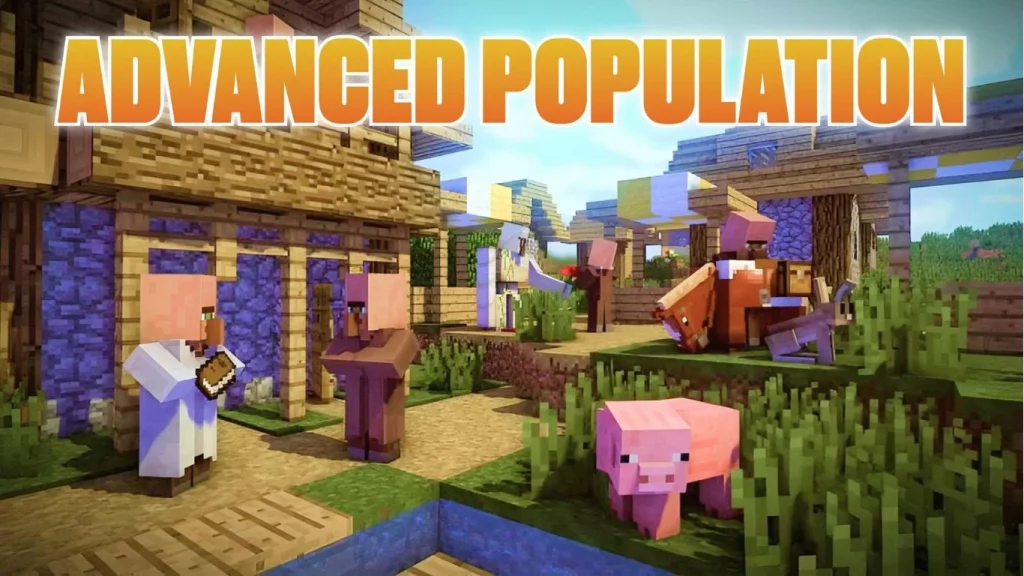Nurturing Young Souls: Accelerating Baby Villager Growth in Minecraft

Key Takeaways
- Baby villagers in Minecraft don’t grow instantly—patience (or a few clever tricks) is required.
- Their growth cycle is 20 in-game minutes (about the same as one real-life day).
- You can accelerate their growth by feeding them bread, carrots, potatoes, or beetroots.
- Building a safe environment keeps them alive long enough to actually grow.
- Growing villagers faster is useful for trading setups, iron farms, and building a thriving community.
Paragraph
In Minecraft, baby villagers normally take 20 in-game minutes to grow into adults, but you can speed up the process with a little nurturing. Feeding them food items like bread, carrots, potatoes, or beetroots accelerates their growth, making them ready for trading and community roles much faster. Just remember to keep them safe from mobs during this phase—after all, a secure and well-fed villager is the backbone of any successful village.
In the expansive world of Minecraft, the growth of villagers adds a unique dimension to the game. This guide delves into the intricacies of nurturing baby villagers, offering insights into their life cycle, the factors influencing growth, and actionable strategies to accelerate the process.
Understanding the Growth Process
The Life Cycle of Villagers
Villagers undergo a distinct life cycle, evolving from helpless infants to fully grown adults. Understanding the stages of this cycle is crucial for implementing effective growth acceleration strategies.
Factors Affecting Villager Growth
Various factors impact the growth rate of baby villagers. These include environmental conditions, nutrition, and the overall atmosphere of the village. By addressing these factors, players can create an environment conducive to rapid villager growth.

Optimizing Villager Growth
Providing Adequate Living Conditions
Creating well-designed living spaces for villagers is foundational to their growth. Adequate shelter, protection from hostile mobs, and well-defined spaces for work and leisure contribute to a positive living environment.
Ensuring a Nutrient-Rich Environment
Just as in the real world, nutrition plays a crucial role in the growth of baby villagers. Maintaining farms with a variety of crops and ensuring a stable supply of food enhances the overall health and growth potential of villagers.
Utilizing Growth-Boosting Items
Feeding Villagers with Specific Foods
Certain foods act as growth boosters for baby villagers. Understanding the nutritional requirements and preferences of villagers enables players to provide them with the right foods for accelerated growth.
Incorporating Enchantments for Growth
Enchanting items and utilizing enchanted tools can contribute to the growth acceleration process. Enchantments like “Mending” and “Unbreaking” on hoes used for farming ensure sustained food production, promoting villager well-being.
Maintaining a Supportive Community
Interactions with Other Villagers
Villagers thrive in a supportive community. Encouraging positive interactions between villagers fosters a sense of camaraderie, positively influencing growth rates. Players can strategically plan the layout of their villages to facilitate social interactions.
Creating a Safe and Positive Atmosphere
A safe and positive atmosphere is essential for optimal villager growth. Lighting, security measures against hostile mobs, and minimizing stressful elements contribute to a nurturing environment for baby villagers.

Troubleshooting Growth Challenges
Identifying Potential Issues
Players may encounter challenges that hinder villager growth. Identifying issues such as insufficient resources, inadequate protection, or negative environmental factors is the first step in addressing growth challenges.
Implementing Corrective Measures
Once issues are identified, players can implement corrective measures. This may involve adjusting village layouts, fortifying defenses, or introducing new resources to enhance the overall well-being of villagers.
Celebrating Milestones
Recognizing Villager Achievements
As baby villagers grow into adults, celebrate their milestones. Recognizing their achievements, such as reaching adulthood or acquiring a profession, contributes to a positive atmosphere within the village.
Expanding the Village Population
Successful growth should inspire players to consider expanding their village population. Introducing new villagers through breeding not only increases the diversity of the community but also offers new opportunities for growth and development.

Exploring Advanced Techniques
Implementing Villager Breeding Stations
For players seeking to take their growth acceleration to the next level, implementing specialized villager breeding stations can be highly effective. These stations streamline the breeding process, ensuring a continuous influx of new villagers.
Maximizing Growth Efficiency
Exploring advanced techniques, such as utilizing specific building layouts, optimizing resource production, and employing automated systems, can maximize growth efficiency. These techniques require strategic planning but can yield substantial benefits.
Conclusion
Accelerating the growth of baby villagers in Minecraft is a rewarding aspect of the game, offering players the opportunity to shape thriving communities within their virtual worlds. By understanding the life cycle of villagers, addressing key growth factors, and implementing strategic measures, players can foster a flourishing village that stands as a testament to their nurturing skills.
Frequently Ask Questions
Villager growth refers to the process by which villagers reproduce and expand their population within a Minecraft village.
Villagers reproduce by having a sufficient number of beds and access to food. If the village meets these conditions, villagers may enter “Love Mode” and produce a baby villager.
Villager reproduction is influenced by the availability of beds, food, and job sites. Adequate housing, a surplus of food, and job opportunities contribute to the growth of the village.
Place enough beds within the village to accommodate the current and potential population of villagers. Each bed should be accessible and not obstructed.
Villagers need to have enough food in their inventories to enter Love Mode. Sharing food, such as bread, carrots, potatoes, or beetroots, with villagers can encourage reproduction.





